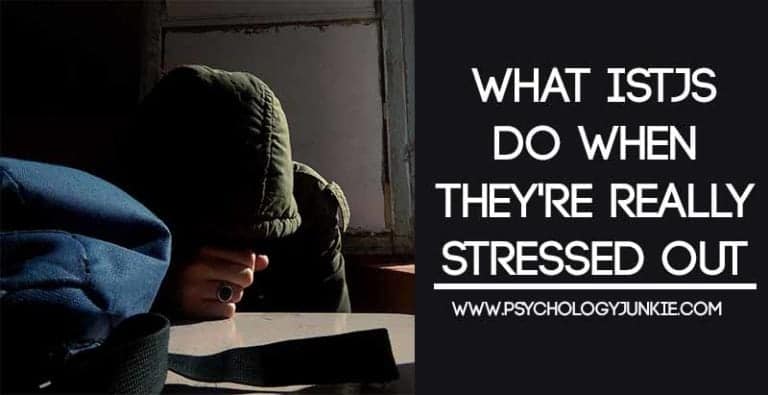The Childhood Struggles of ISTJs
ISTJ children are the quiet observers of the playground, the serious students deeply engrossed in their textbooks, and the old souls who navigate life with a steady hand. They are the children who remind us that even in youth, there’s a depth of character that belies years. As a society, we may see these children as self-sufficient and sturdy, almost as if their internal compass prevents them from wandering too far into the emotional or spontaneous realms that characterize much of childhood. Yet, within the structure they so crave, there lies a battlefield of struggles that we, the parents and educators, must understand and address with awareness and compassion.
Not sure what your personality type is? Take our personality questionnaire here. Or you can take the official MBTI® here.

The Unique Childhood Struggles of ISTJs

For the ISTJ child, the world is a whirlwind of new and unexpected experiences, sights, sounds, and people. In the midst of all this confusion, they want parents who ground them and guide them with a calm outlook. Their preferred mode of functioning, where everything adheres to an existing structure and makes logical sense, does not always align with the unpredictable whirlwind of childhood.
Unpredictability: Whether it’s an abrupt change in daily routines or an impromptu classroom activity, ISTJs find themselves ill-at-ease in the face of the unexpected. They seek predictability in an unpredictable universe, a little island of certainty where their meticulous nature can flourish.
“When I was a child I just felt like I was caught in a tornado I couldn’t get out of. Every day was different. I was exhausted from being around people all day at school. My parents didn’t understand my needs as an introvert. I felt like I was suffocating without air; I just needed some time to myself, some sense of stability.” – Sam, an ISTJ
Consistency: ISTJ children require consistency—especially from their caregivers. Mixed parenting styles can throw them into a state of confusion, as they struggle to understand which rulebook to follow. They aren’t looking for ambiguity; they long for a steadfast mentor to guide them towards stability.
The Solitude They Embrace and the Quiet They Crave
In a world that champions extroversion, our ISTJ children may stand out—not because they seek the spotlight, but precisely because they avoid it. Society often misunderstands their stoicism as coldness or indifference, ignorantly disregarding the rich, warm world of thoughts and emotions that resides quietly within.
Need for Quiet: The ISTJ child’s necessity for silence is not about loneliness; it’s about rejuvenation. Surrounded by the chaos of youthful exuberance, they retreat inward, seeking solace where others may see isolation.
Alone Time: Overbearing social pressure is not just an inconvenience; it’s an insidious force that clashes with the ISTJ’s innermost needs. Customarily, parents might push children towards activities and interactions. However, ISTJs march to a different beat—one that treasures autonomy and periods of reflective solitude. This isn’t to say ISTJs don’t need to spend any time with other people; they definitely do! But they need time to know what to expect, and they need ample alone time each day to recharge. A day full of school activities and busy classrooms followed by social engagements in the evening could completely drain an ISTJ child and leave them overwhelmed when they have to wake up in the morning and do the exact same thing the very next day.
The Straight Path They Walk: Discipline, Direction, and Diligence
ISTJ children long for a sense of stability, peace, and order in life—not for the mere sake of structure but for the direction and mental clarity it offers.
Discipline: The concept of discipline for an ISTJ is not a means to control but a guide to self-improvement and personal growth. If you’re the parent of an ISTJ, be consistent and clear in discipline. Wishy-washiness is maddening for an ISTJ child, and ever-changing expectations can make them lose respect for the very people that are supposed to be guiding them. As for their parents, consistency and logic provide the framework for effective guidance—the kind that not only corrects behavior but informs understanding.
Instruction: ISTJs want clear, linear instructions—those that delineate step-by-step paths to achievement. If you’re working with an ISTJ child, try to be as linear as possible. Give sensible instructions, explain the ‘why’ and the ‘how’, and give them time to prepare.
Navigating Emotional Currents and Growing Under Pressure
Even the most structured environments won’t prevent the wash of emotions that can often overwhelm an ISTJ child. Feelings, especially the turbulent ones, can seem like foreign invaders to their naturally calm disposition.
Emotional Complexity: ISTJs might struggle with the chaotic nature of emotions and the ways they are expected to react to them. They need validation and support as they learn to navigate these waters, to understand that feelings are not the antithesis of logic, but its complement. Helping ISTJs sort out their feelings in a calm, understanding way is key. Give them journals and teach them how to jot down their feelings, and listen without interjecting when they confide in you. If an ISTJ child is in an emotionally chaotic family with a lot of outbursts and drama, they will find it especially challenging to keep their cool. These situations can feel very confusing and troublesome for them as they don’t always know how to interpret these big expressions.
Rewards: It’s important to recognize and reward the ISTJ child’s natural sense of responsibility. It’s not just about boosting their ego; it’s about affirming their mature approach to life. Give these children a token—a nod not just to their behavior, but to their inherent drive for trustworthiness and dependability.
Advice for Nurturing the ISTJ Child
To the parents of ISTJ children, to the teachers who guide them, and to the friends who cherish their steadfast loyalty: there are strategies we can employ to ensure these children don’t just endure their struggles but thrive amidst them.
- Preparation: Prepare an ISTJ child for changes as they come. Offer them a preview of what’s to come, allowing them time to pivot their focus gracefully.
- Consistent Routines: Embrace routines and consistency in home life and in the classroom. Maintain a rhythm that aligns with the ISTJ’s need for predictability.
- Respect Their Space: Honor their space. Provide environments where solitude isn’t just allowed but encouraged, creating havens where they can recharge and reflect.
- Scaffolded Social Interactions: Approach socialization methodically. Recognize that while ISTJs may revolt against pronounced social demands, they may still find joy in low-pressure conversations or smaller group engagements.
- Empathy Education: Teach empathy not as an abstract concept but as a practiced skill. Model it, restate insensitive comments in kinder terms, and collaboratively explore different perspectives with the child.
- Lead with Logic: When instructing or disciplining, logic and clarity are key. Understand that for ISTJs, the path needs to be as visible as the destination.
- Reward System: Develop a reward system that recognizes increasing levels of responsibility and reflects confidence in their decision-making.
- Educational Resources: Provide resources that satiate their thirst for facts and know-how. Encourage their pursuit of knowledge through encyclopedias and instructive texts.
- Communication: Inform them of new experiences ahead of time and provide them with a chance to adjust. Their comfort in facing what’s ahead is directly proportional to the forewarning they’re given.
What Do You Think?
Do you relate to these struggles? Were these tips helpful to you? Let us know in the comments! Your thoughts might encourage another ISTJ reading this.
Crack the Code of Your ISTJ Personality with the Owner’s Manual Ecourse!
Are you an ISTJ on a quest to understand the inner workings of your personality better? Unlock the power of being a ‘Detective‘ with Personality Hacker’s ISTJ Owner’s Manual eCourse. 🗝️
Discover the blueprint to your unique ISTJ mind and learn how to capitalize on your natural strengths for immense personal growth! 🚀
What’s Inside Your ISTJ Owner’s Manual?
- 🧭 Type Fundamentals Module: Discover the architecture of your ISTJ persona and explore which of the four ISTJ subtypes resonates with you.
- 💫 Finding Flow Module: Maximize your productivity by uncovering the secrets to your personal flow state.
- 🧠 Overcoming Loops & Grips Module: Master your mental landscape and learn to recognize when your thoughts lead toward defensive loops or stressful grips.
- 🌀 FIRM Fixation Module: Learn about the ISTJ’s fixations on Freedom, Invulnerability, Rightness, or Management and find your perfect balance.
- 🔨 The Toolbox Module: Apply field-tested strategies and exercises specifically designed for ISTJs to tackle life’s ups and downs.
Benefits of the ISTJ Owner’s Manual:
- Develop a profound understanding of the ISTJ cognitive functions.
- Gain insights into ISTJ needs and dynamics in relationships.
- Find practical coping mechanisms for stress, career changes, and more.
Find out more about the ISTJ Owner’s Manual!
Keep in mind, I am an affiliate with Personality Hacker. If you purchase one of their eCourses, I get a small commission that I use to help pay for hosting fees related to Psychology Junkie. That said, I’ve been friends with Joel and Antonia for years and have seen firsthand what a difference their mentorship can make in people’s lives.
Unlock the manual to YOU. Because life doesn’t come with instructions, but now, your personality type does! 🌟 Sign up now!
—
Designed with the ISTJ in mind – because the details matter.
Sources:
Nurture by Nature: Understand Yoru Child’s Personality Type – and Become a Better Parent by Paul D. Tieger & Barbara Barron-Tieger (1997, Little, Brown and Company)
MBTI® Manual: A Guide to the Development and Use of the Myers-Briggs Type Indicator® Instrument by Isabel Briggs -Myers, Mary H. McCaulley, Naomi L. Quenk, and Allen L. Hammer (CPP, Inc. 2003)








Thank you so much for this article! As an ISTJ child I felt these exact struggles & no one seemed to understand me. I did not fit in well with other children & my parents always made things worse by not understanding what I went through. I felt so validated reading this!
I’m SO glad you enjoyed this! That’s my goal, to validate others’ experiences and help them to feel more content with who they naturally are wired to be. Thanks for your feedback!
Everything I read in this article applies to my personality. The material is really interesting and it does help me to understand myself better.
Thank you!
I wish those closest to me would’ve understood me better when I was a child, and in fact I wish I would’ve understood myself better then. My childhood, and into adulthood, was a very painful time for me, and it hurts me even today. My ISTJ personality clashed frequently with he personalities of peers during especially my high school years, and that caused me no end of trouble; in fact, it wasn’t until my 40s that I finally gained a long-erm friendship with someone my age, and I’m married to her now.
I apologize for the long-winded post, but I wish this article was published back around 1980, which might have helped my parents and teachers understand me better, instead of 2024. Thank you very much for this article, and for helping me understand this part of my younger days.